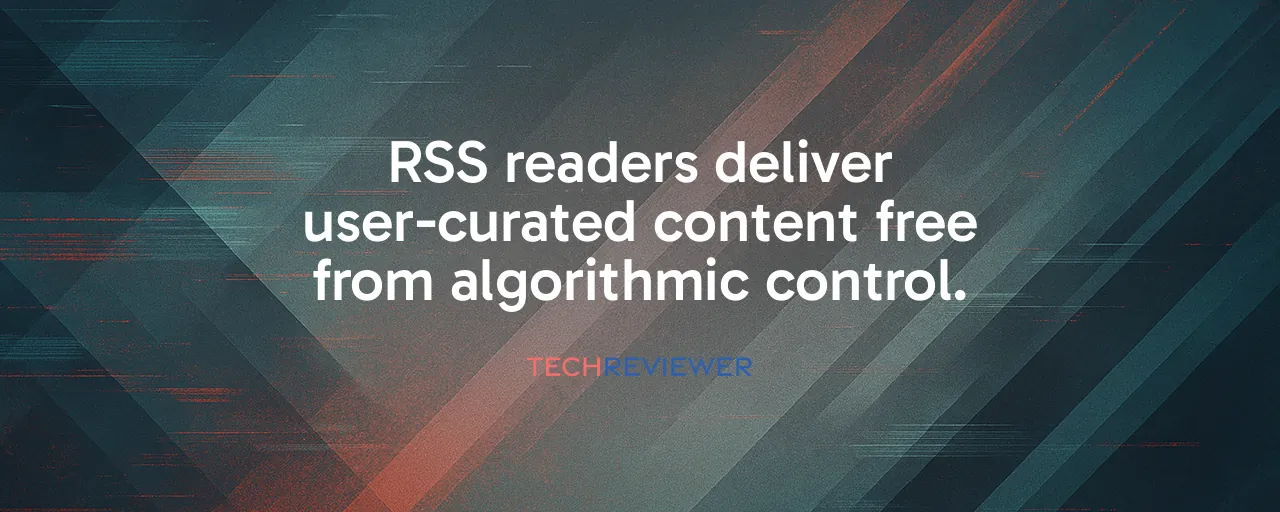The Pull of Personalized Content
In an era where social media platforms dictate what you see, RSS readers offer a refreshing alternative. These tools let you handpick your content sources, from niche blogs to major news outlets, and deliver them in a clean, chronological feed. Unlike Facebook or Twitter, which tweak algorithms to keep you scrolling, RSS puts you in the driver's seat. You decide what matters, without a corporate middleman nudging you toward viral videos or sponsored posts.
The appeal lies in simplicity and control. Tools like Feedly and Inoreader aggregate articles from your chosen sources, while open-source options like FreshRSS let tech-savvy users host their own servers for total data ownership. This setup harks back to the early web, where information flowed freely, unfiltered by profit-driven platforms. Yet, the challenge remains: can RSS readers compete with the instant gratification of social media?
When Platforms Lock You In
Social media giants like Facebook have a knack for keeping users within their ecosystem. In early 2025, a user reported a stark reality: a post linking to a YouTube video garnered a thousand times fewer views than one uploading the same video natively. External links often get buried, hidden in comment sections unless users dig for them. This algorithmic suppression pushes creators to prioritize platform-native content, sidelining independent blogs and websites.
The result is a digital cul-de-sac. Users circle within these walled gardens, rarely venturing to the broader web. Independent publishers, from bloggers to journalists, struggle to reach audiences when platforms deprioritize their links. RSS readers counter this by pulling content directly from original websites, bypassing algorithms entirely. But with platforms dominating online attention, RSS remains a niche tool for those willing to seek it out.
Lessons From Google Reader's Fall
Google Reader's shutdown in 2013 marked a turning point for the web. Its social features let users share articles, comment, and follow friends' curated feeds, fostering a vibrant community. When Google pulled the plug, over 100,000 users signed petitions in protest, and alternatives like Feedly gained three million users in weeks. Yet, no successor fully recaptured Reader's social magic, leaving a gap for seamless content sharing.
The lesson? Relying on corporate giants for open tools is risky. Google's move, some argue, aimed to funnel users to Google Plus, a now-defunct platform. Today's RSS readers, like The Old Reader, try to revive social sharing but cater to smaller crowds. The challenge is clear: building a tool that blends content control with the social spark that keeps users engaged.
Facebook's Link Suppression Trap
Facebook's handling of external links offers another cautionary tale. Users report that posts linking to outside content, like a blog or YouTube video, see engagement plummet compared to native uploads. In one case, a creator's video posted directly to Facebook outshone a linked version by a factor of 1,000. Links often hide in comments, visible only if users bypass the default 'most relevant' view. This tactic keeps users on the platform but stifles the open web.
RSS readers sidestep this trap by fetching content directly, ensuring you see every post from your chosen sources. Tools like Lighthouse go further, curating high-value articles and even converting newsletters into feeds. Still, the convenience of platforms like Facebook lures users who prioritize ease over control, highlighting the uphill battle for RSS adoption.
Innovations Pushing RSS Forward
Despite challenges, RSS readers are evolving. Modern tools like Feedly integrate AI to summarize articles or filter clickbait, while Lighthouse emphasizes curated inboxes over raw feeds. Newsletter-to-RSS converters, like Kill the Newsletter, bring email-based content into the fold, addressing the shift from blogs to subscriptions. Open-source projects like Miniflux offer privacy-focused users full control with minimal setup.
Emerging ideas, like pairing RSS with decentralized protocols like ActivityPub, could bridge content curation and social sharing. Imagine reading your feeds and posting insights to a Mastodon network, free from algorithmic gatekeeping. These advancements show RSS isn't just surviving, it's carving out new ways to empower users.
Why RSS Still Matters
RSS readers thrive on a simple promise: you control your information diet. In a world where platforms like Facebook shape narratives through algorithms, this autonomy feels revolutionary. Privacy-conscious users flock to self-hosted options like FreshRSS, avoiding the data tracking baked into social media. Meanwhile, content creators benefit from RSS's direct distribution, reaching audiences without platform interference.
Yet, barriers persist. Many users don't know RSS exists, and setting it up can feel daunting compared to social media's plug-and-play appeal. The decline of Google Reader and Inoreader's decision to deprecate social features in 2025 due to low usage and poor user experience highlight the difficulty of sustaining social functionality in RSS readers. Still, for those craving an open web, RSS readers offer a lifeline, proving that user-driven content curation is far from dead.
